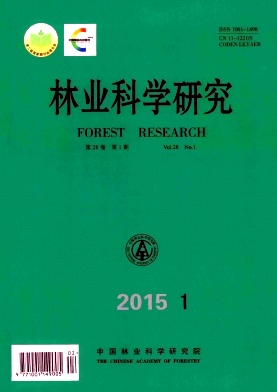| [1] |
时圣德. 贵州蔷薇属植物新分类群[J]. 贵州科学, 1985, 9(1): 8-9. |
| [2] |
付慧晓, 王道平, 黄丽荣, 等. 刺梨和无籽刺梨挥发性香气成分分析[J]. 精细化工, 2012, 29(9): 875-878. |
| [3] |
邓朝义, 方仕能, 黄 勇. 贵州特有种子植物无子刺梨形态特征研究及分类学订正[J]. 种子, 2009, 28(9): 62-68. |
| [4] |
韦景枫, 钟 漫, 程友忠, 等. 无籽刺梨试管苗移栽及其影响因素的探讨[J]. 中国林副特产, 2010, 104(6): 30-31. |
| [5] |
季祥彪, 李淑久. 贵州4种刺梨的比较形态解剖学研究[J]. 山地农业生物学报, 1998, 1(1): 28-33. |
| [6] |
文晓鹏, 庞晓明, 邓秀新. 刺梨及部分近缘种的形态学形状及RAPD 标记分析[J]. 园艺学报, 2003, 30 (2): 204-206. |
| [7] |
安明态, 程友忠, 钟 漫, 等. 贵州蔷薇属一新变种--光枝无子刺梨[J]. 种子, 2009, 28(1): 6. |
| [8] |
纵 丹, 员 涛, 周安佩, 等. 滇杨优树遗传多样性的 AFLP 分析[J]. 西北林学院学报, 2014, 29(4): 103-108. |
| [9] |
Tautz D, Arctander P, Minelli A, et al. DNA points the way ahead in taxonomy[J]. Nature, 2002, 418: 479. |
| [10] |
Hebert P D N, Cywinska A, Ball S L. Biological identifications through DNA barcodes[J]. Proceedings of the Royal Society of London. Series B: Biological Sciences, 2003, 270: 313-321. |
| [11] |
Liu J, Shi L, Han J, et al. Identification of species in the angiosperm family Apiaceae using DNA barcodes[J]. Molecular Ecology Resources, 2014 Apr 16. doi: 10.1111/1755-0998.12262. |
| [12] |
Weitschek E, Fiscon G, Felici G. Supervised DNA barcodes species classification: analysis, comparisons and results[J]. BioData Mining, 2014 Apr 11, 7(1):4. doi: 10.1186/1756-0381-7-4. |
| [13] |
Li X, Yang Y, Henry R J, et al. Plant DNA barcoding: from gene to genome[J]. Biological Reviews, 2014 Mar 26, doi: 10.1111/brv.12104. |
| [14] |
Vos P, Hogers R, Bleeker M, et al. AFLP: a new technique for DNA fingerprinting[J]. Nucleic acids research, 1995, 23(21): 4407-4414. |
| [15] |
Tixier M H, Sourdille P, Rder M, et al. Detection of wheat microsatellites using a non radioactive silver-nitrate staining method[J]. Journal of Genetics and Breeding, 1997, 51(2): 175-178. |
| [16] |
张富民, 葛 颂. 群体遗传学研究中的数据处理方法I. RAPD 数据的 AMOVA分析[J]. 生物多样性, 2002, 10(4): 438-444. |
| [17] |
Yeh F, Yang R C, Boyle T. POPGENE. A User-friendly Shareware for Population Genetic Analysis [M]. Edmonton: Molecular and Biotechnology Center, University of Alberta, 1997. |
| [18] |
Thompson J D, Gibson T J, Plewniak F, et al. The CLUSTAL X windows interface: flexible strategies for multiple sequence alignment aided by quality analysis tools[J]. Nucleic acids research, 1997, 25(24): 4876-4882. |
| [19] |
Swofford D L.. PAUP* 4.0: Phylogenetic analysis using parsimony and other methods. Beta version 4.0 b10[M]. Sunderland: Sinauer Associates. 2002. |
| [20] |
Kimura M. Estimation of evolutionary distances between homologous nucleotide sequences[J]. Proceedings of the National Academy of Sciences, 1981, 78(1): 454-458. |
| [21] |
Kumar S, Tamura K, Nei M, et al. MEGA: molecular evolutionary genetics analysis, version 1.02[J]. Systematic Biology, 1995, 44(4): 576-577. |
| [22] |
Lahaye R, Bank M V D, Bogarin D, et al. DNA barcoding the floras of biodiversity hotspots[J]. Proceedings of the National Academy of Sciences, 2008, 105(8): 2923-2928. |
| [23] |
Lahaye R, Savolainen V, Duthoit S, et al. A test of psbK-psbI and atpF-atpH as potential plant DNA barcodes using the flora of the Kruger National Park as a model system (South Africa)[J]. Nature Precedings, 2008: 1-21. |
| [24] |
Taberlet P, Gielly L, Pautou G, et al. Universal primers for amplification of three non-coding regions of chloroplast DNA[J]. Plant Molecular Biology, 1991, 17(5): 1105-1109. |
| [25] |
White T J, Bruns T, Lee S, et al. Amplification and direct sequencing of fungal ribosomal RNA genes for phylogenetics. In: Innis M A eds., PCR protocols: a guide to methods and applications[M]. New York: Academic Press, 1990, 315-322. |
| [26] |
黄建安, 李家贤, 黄意欢, 等. 茶树品种资源遗传多样性的AFLP研究[J]. 园艺学报, 2006, 33(2): 317-322. |
| [27] |
赵 琴, 刘 君, 杨志民. AFLP 分子标记对 9 份狗牙根材料的鉴定分析[J]. 草地学报, 2012, 20(6): 1156-1162. |
| [28] |
鲁凤娟. 利用 AFLP 分子标记鉴定库尔勒香梨的分类地位[J]. 江苏农业科学, 2010 (3): 40-41. |
| [29] |
唐先华, 张晓艳. 睡莲类植物 ITS nrDNA 序列的分子系统发育分析[J]. 地球科学: 中国地质大学学报, 2003, 28(1): 97-101. |
| [30] |
王晓锋, 刘娜娜, 季孔庶. 黄杨属植物 ITS 序列分子进化特点分析[J]. 分子植物育种, 2011, 9(4): 506-513. |
| [31] |
Lahaye R, Van der Bank M, Bogarin D, et al. DNA barcoding the floras of biodiversity hotspots[J]. Proceedings of the National Academy of Sciences, 2008, 105 (8): 2923-2928. |
| [32] |
Yang H Q, Dong Y R, Gu Z J, et al. A Preliminary Assessment of mat K, rbc L and trn H-psb A as DNA Barcodes for Calamus (Arecaceae) Species in China with a Note on ITS [C]//Annales Botanici Fennici. Finnish Zoological and Botanical Publishing Board, 2012, 49(5): 319-330. |
| [33] |
宁淑萍, 颜海飞, 郝 刚, 等. 植物 DNA 条形码研究进展[J]. 生物多样性, 2008, 16(5): 417-425. |
| [34] |
Liu J I E, Moeller M, GAO L M, et al. DNA barcoding for the discrimination of Eurasian yews (Taxus L., Taxaceae) and the discovery of cryptic species[J]. Molecular Ecology Resources, 2011, 11(1): 89-100. |
| [35] |
Zhang W, Fan X H, Zhu S F, et al. Species-specific identification from incomplete sampling: applying DNA barcodes to monitoring invasive solanum plants[J]. PloS One, 2013, 8(2): e55927. |





 DownLoad:
DownLoad: